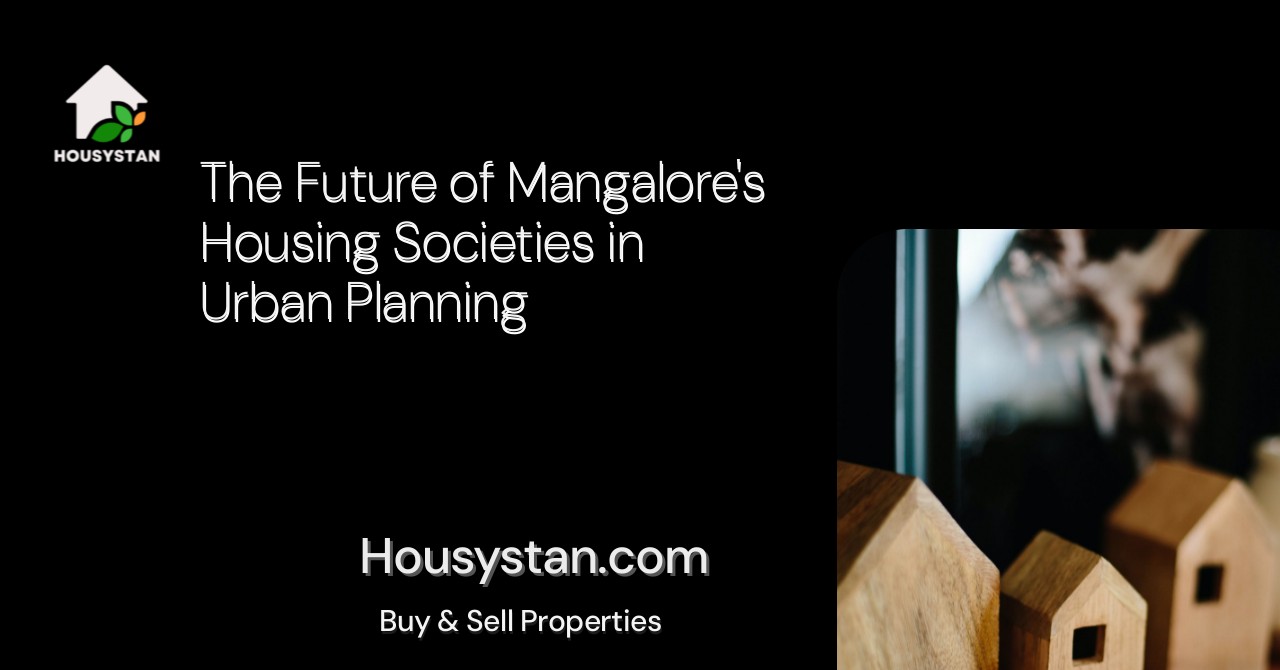The Future of Mangalore's Housing Societies in Urban Planning
Read latest blogs and articles from Housystan

The Information mentioned here was last updated on:
4/1/2026The Future of Mangalore's Housing Societies in Urban Planning
Mangalore, a vibrant coastal city in Karnataka, India, is experiencing rapid urbanization, which presents unique challenges and opportunities for its housing societies. As urban planning evolves, understanding what lies ahead for Mangalore’s housing communities is crucial not only for residents but also for urban planners, real estate developers, and local government bodies. By examining current trends and future predictions, we can better anticipate how Mangalore can harness its growth while ensuring sustainability and improved quality of life.
The Current Landscape of Mangalore's Housing Societies
- Verified Tenants/Buyers
- Unlimited Property Listing
- Zero subscription/charges fee
Mangalore, known for its lush greenery and strategic location along the Arabian Sea, has become an urban magnet. Currently, the housing landscape in Mangalore consists of:
- Diverse Housing Options: Ranging from traditional homes to contemporary apartments and gated communities.
- Robust Infrastructure: Well-connected roads and public transportation systems providing commuter convenience.
- Mixed Demographics: A blend of students, professionals, and retirees creating vibrant community dynamics.
The burgeoning population, driven by educational institutions and job opportunities, has fueled demand for housing, making urban planning a priority.
Key Factors Influencing Urban Planning in Mangalore
For effective urban planning, several factors play a pivotal role in shaping the future of Mangalore’s housing societies:
Infrastructure Development
1. Transportation Upgrades:
- Expanding road networks and public transport systems to reduce congestion and improve accessibility.
- Integration of smart traffic management solutions to enhance commuter experience.
2. Utilities and Services:
- Developing state-of-the-art water supply systems and waste management facilities to support rising populations.
- Emphasizing renewable energy sources as part of sustainable urban development.
Environmental Sustainability
1. Eco-Friendly Housing Initiatives:
- Encouraging green building certifications and sustainable construction practices.
- Promoting the use of eco-friendly materials and energy-efficient designs in new developments.
2. Preservation of Natural Resources:
- Implementing policies to protect Mangalore’s coastline and biodiversity.
- Enhancing green spaces such as parks and gardens within housing societies to improve air quality and residents’ well-being.
Technological Integration
1. Smart City Concepts:
- Incorporating IoT (Internet of Things) for efficient management of housing society operations.
- Installing smart grids for optimized energy consumption.
2. Digital Connectivity:
- Expanding high-speed internet access to support remote working and digital business activities.
- Facilitating online platforms for community engagement and governance within housing societies.
Emerging Trends in Mangalore’s Housing Societies
As Mangalore strides towards modernization, several trends are emerging in the housing sector:
- Rise of Co-Living Spaces: Catering to students and young professionals seeking community-oriented living arrangements.
- Gated Communities Popularity: Offering added security and amenities, promoting a sense of exclusivity among residents.
- Technologically Enhanced Homes: Featuring smart home devices that provide convenience and efficiency to residents.
These trends reflect a shift in consumer preferences towards more interconnected and sustainable living environments.
Challenges in Mangalore's Urban Planning
Despite the progress, urban planning in Mangalore faces challenges that must be addressed:
Managing Urban Sprawl
- Controlled Expansion: Implementing zoning laws and regulations to prevent haphazard city growth.
- Preserving Core City Areas: Ensuring that redevelopment projects do not compromise the historical and cultural essence of Mangalore.
Balancing Development with Conservation
- Resource Allocation: Prioritizing sustainable practices that balance industrial growth with environmental concerns.
- Community Involvement: Engaging local communities in decision-making processes to align development with residents’ needs.
Opportunities for Mangalore’s Housing Societies
Community-Centric Initiatives
- Enhanced Social Cohesion: Planning community centers and public venues for social interactions and cultural exchange.
- Affordable Housing Projects: Developing homes that cater to diverse income groups, ensuring inclusivity.
Innovation and Partnerships
- Collaborative Development: Encouraging partnerships between government, private developers, and the community for optimal resource utilization.
- Integration of Technology and Innovation: Leveraging smart technologies to improve operational efficiency and resident services.
Projections for the Future
Looking forward, the future of Mangalore’s housing societies will likely include:
- Sustainable Urbanism: Embracing eco-friendly practices and technological advancements for creating sustainable communities.
- Resilient Infrastructure Development: Focusing on infrastructure resilience to withstand the impacts of climate change and rapid urbanization.
- Adaptive Housing Solutions: Integrating flexible housing designs to accommodate changing family dynamics and lifestyle preferences.
In Conclusion
While crafting the future of Mangalore's housing societies, it's important to adopt a balanced approach that considers growth, sustainability, and the well-being of its residents. By strategically planning and implementing forward-thinking urban initiatives, Mangalore remains poised to not only meet the current demands but also propel towards a more harmonious and prosperous urban environment. Residents and stakeholders must collaborate to ensure that the city thrives as a model for sustainable urban planning.